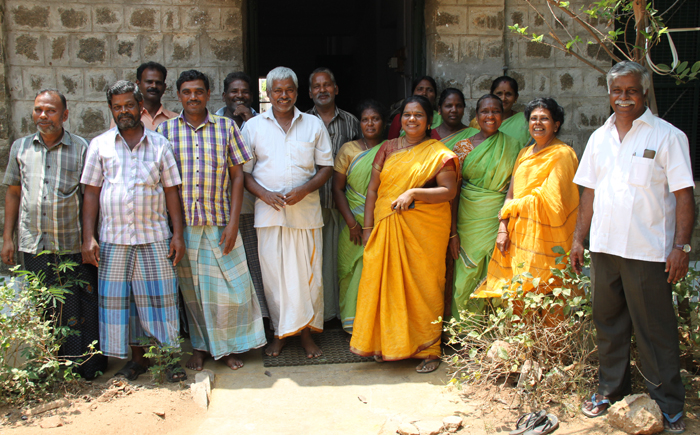Made in India by using 50% neem oil and Citronella for an emollient, antiseptic and energising soap that is a joy to use. This soap has been developed by OneVillage in partnership with the Palam Rural Centre. This soap is an excellent everyday soap especially for problem skins.
It does not contain sodium lauryl sulphate (SLS)- a known skin and eye irritant often present in soaps- no parabens, triclosan or artificial perfumes.
Palam Rural Centre was set up as a charitable community of 'lower-caste' Indians and has evolved into a society for the common good of those who live and work in the community, functioning as a small village. Members of the community live in individual houses on the land, and maintain a village school. Over the years, many people in the area have abandoned the countryside and taken jobs in factories- principally in the local knitwear industry. The industry consumes a large quantities of water for the bleaching and dying of textiles and rural communities such as Palam are feeling the effects as it becomes more difficult to get enough water for basic needs like cooking, washing and drinking. Life is not easy in the community, but the quality of life remains high and the spirit strong- and this will continue as long as their products have a market.

OneVillage was set up in 1979 to work in partnership with organizations with a social foundation, such as Palam Rural Community, to encourage equal opportunities and provide lasting solidarity. They have worked with Palam to develop soaps with no artificial fragrance and, instead of cheap fat and chemicals, rely on a wholesome base of beneficial vegetable oils.
How the soap is made:
The oils for the soap are measured out and mixed together and then heated. Once they have been heated, sodium hydroxide and salt are added. This causes the fats to saponify- and the process is repeated 3-4 times to make sure all the oil reacts. The soap is then allowed to cool and set in a block. The top of the block contains insoluble impurities known as the crust, whilst at the bottom is what is called «nigre» which also contains unwanted impurities and alkaline in the form of caustic soda and salt. Sandwiched between top and bottom is what is called «neat» soap and this is the basis for the production of this soap.
But even this part of the block includes some alkaline salts and the pH is too high to use on the skin. So at this point in the process, a small quantity of fine grade fatty acid in the form of coconut oil extract is added and the substance once again gently heated. Coconut oil is the best ingredient for this purpose, and at the same time it is a beneficial oil for the skin.
Great care is essential at this stage because too much acidity, or too much salt, can both be harmful. The final pH of the soap must be between 9–10.5.
But over time the essential oils and extracts (Citronella, Sandalwood) are liable to disappear or evaporate due to ageing, light, or temperature variations, and for the same reasons the essential base of natural vegetable oils is itself also at risk from becoming unpleasantly rancid. To prevent these unwelcome effects, a preservative is included in the form of citric acid and zinc oxide in conformity with European and international standards.
Come follow us on social media for all the latest news and updates.